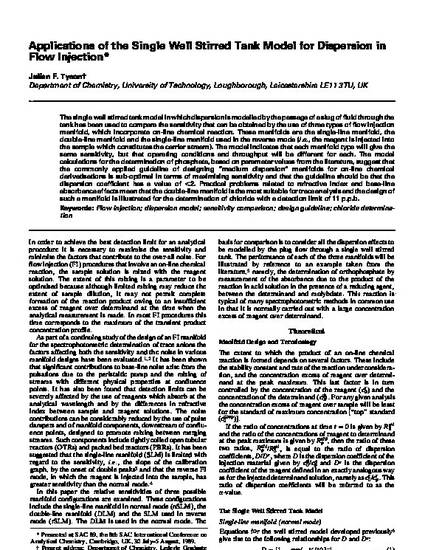
Article
Applications of the Single Well-Stirred Tank Model for Dispersion in Flow Injection
Analyst
(1990)
Abstract
The single well stirred tank model in which dispersion is modelled by the passage of a slug of fluid through the
tank has been used to compare the sensitivity that can be obtained by the use of three types of flow injection
manifold, which incorporate on-line chemical reaction. These manifolds are the single-line manifold, the
double-line manifold and the single-line manifold used in the reverse mode (i.e., the reagent is injected into
the sample which constitutes the carrier stream). The model indicates that each manifold type will give the
same sensitivity, but that operating conditions and throughput will be different for each. The model
calculations for the determination of phosphate, based on parameter values from the literature, suggest that
the commonly applied guideline of designing "medium dispersion" manifolds for on-line chemical
derivatisations is sub-optimal in terms of maximising sensitivity and that the guideline should be that the
dispersion coefficient has a value of <2. Practical problems related to refractive index and base-line
absorbance effects mean that the double-line manifold is the most suitable for trace analysis and the design of
such a manifold is illustrated for the determination of chloride with a detection limit of 11 p.p.b.
Keywords
- Flow injection,
- dispersion model,
- sensitivity comparison,
- design guideline,
- chloride determination
Disciplines
Publication Date
1990
Citation Information
Julian Tyson. "Applications of the Single Well-Stirred Tank Model for Dispersion in Flow Injection" Analyst Vol. 115 (1990) p. 587 Available at: http://works.bepress.com/julian_tyson/20/
